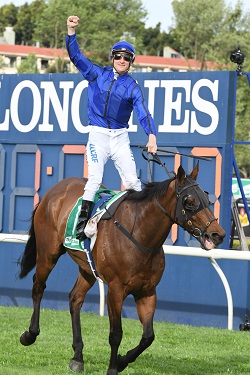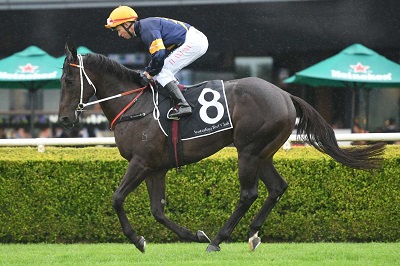Latest News
With this year's The Star Doncaster Mile only days away, it was the perfect time to pick the brain of professional punter and Champion Bets' form analyst Mark Rhoden about betting into Group One Handicaps. This is Part Four of the carnival edition of the Punting Pointers series.
Should punters approach betting in handicaps any differently to say, weight for age races? Brad Gray also asks Rhoden what profile of horse he looks for and which runner fits the bill for Saturday.
Part Three: Jockeys And Trainers
Do you approach betting in handicaps any differently to other races?
Not in and of themselves – the weight a horse is carrying is something I factor in regardless of the conditions. But I do enjoy the challenge of doing the form on a handicap with a big spread of weights.

Happy Clapper and Blake Shinn won last year's Doncaster (Pic: Steve Hart)
A big Group 1 mile like the Doncaster is a classic example of this, but in New South Wales in recent times a lot more races are falling into this category. With connections of horses “out of the handicap” allowed the option of racing off 52kg, and then claiming, we are seeing spreads of 10kg and more for the first time in many years.
I think it’s a very good thing, it makes for great racing and trying to find the winner is a really enjoyable challenge.
What’s the edge in betting in handicaps as opposed to weight for age races?
As a rule, weight-for-age races produce thinner fields with fewer winning chances. Handicaps tend to have more depth.
While weight is the obvious difference, bigger fields with more chances accentuate the importance of a lot of other factors. This means things like the barrier draw, speed map and jockey engagements can be very important, as you have so many horses in the field with a genuine winning chance thanks to the weights.
What profile of horse attracts your attention in handicaps?
Ideally, I really like to see a lightly-raced improver who is yet to reach its full potential, and comes into the race in good form.
A horse that both has the ability to measure up to the class but is well in at the weights, perhaps due to the handicapper not yet “catching” it.
How much do you factor in weight? Is it factored in too much, or not enough by most punters? Do you have a kg to lengths ratio you use?
Weight is one of the building blocks of how I rate and assess races and individual horses, and as such, I do use a formula.
However one of the key things I was taught by one of my mentors, the famous bookmaker and form student, Mark Read, is absolutely crucial: weight affects different horses differently.
For instance, a one-paced horse will get nowhere near the benefit of a big weight drop as a horse with good acceleration. So while weight is treated in a formulaic way to derive a rating, it’s important to remember that a “line of best fit” is being used and individual horses’ ratings will be affected in different ways by weight shifts.
As to how weight is treated by other punters and the market, I’d say I fall in the middle. I believe that to say that weight has no (or even little) impact is wrong. But neither is it the be-all and end-all, in my opinion.
Got any early thoughts in this year’s Doncaster?

Brutal ran second to Winx last start (Pic: Bradley Photos)
Looking at the field, Brutal fits the profile that I mentioned above – a lightly-raced, in-form improver who looks well weighted. But has the run against Winx knocked him out? That’s something I’ll be considering during the week.
Any other insights for punters ahead of Saturday's Doncaster?
The Doncaster of 2000 is one that sticks is my mind as a perfect example of what this race is all about. The colt Over beat superstar Sunline by a neck.
Sunline was obviously a champion, but she was giving away 6kg to the improving three-year-old, and that proved too much for even her. The handicapper evened them right up. The following Saturday Sunline destroyed the field, including Over, at weight-for-age conditions in the All Aged.
That’s the beauty of the big handicaps like the Doncaster and why they’re such a great part of racing. And such a great challenge for us punters!
Neil Evans' Tips For Gosford (Thursday)
Read More
Queen Elizabeth Stakes - A Runner-By-Runner Guide
Read More
JMac Sees Pole Position As Queen Elizabeth Advantage For Via
Read More
World's Best Clash In $5m Queen Elizabeth Stakes
Read More
Name Change - Dubai Goldrush (Randwick, Saturday)
Read More

